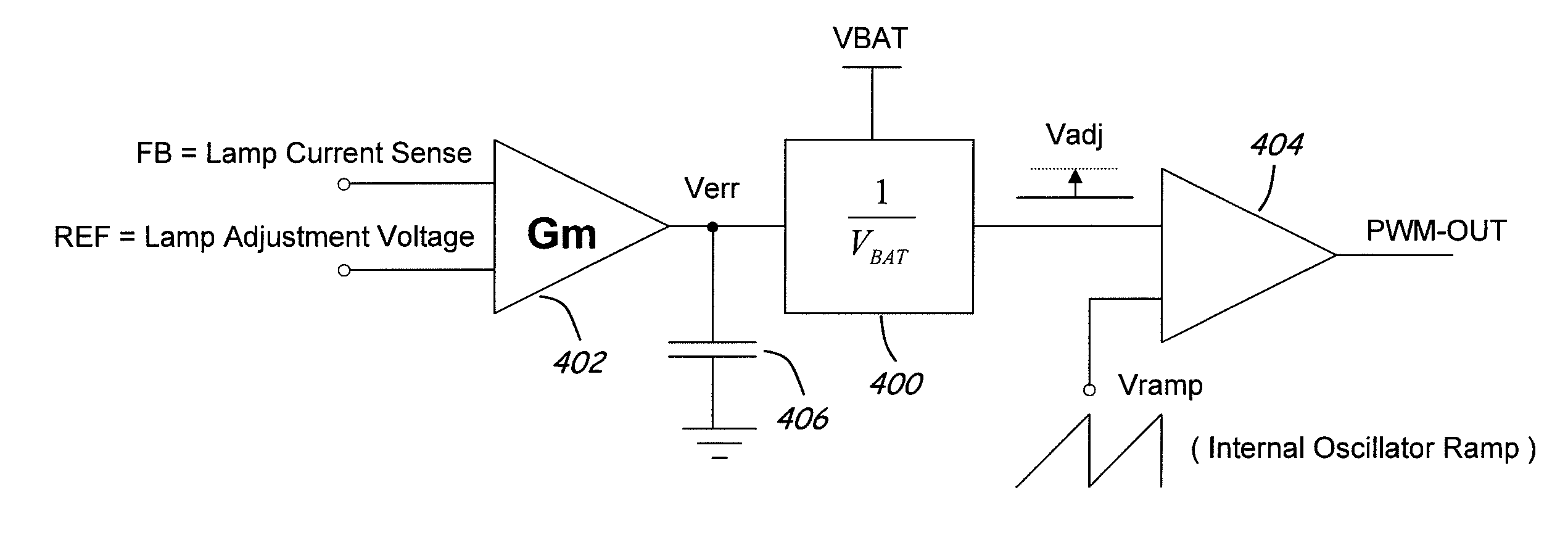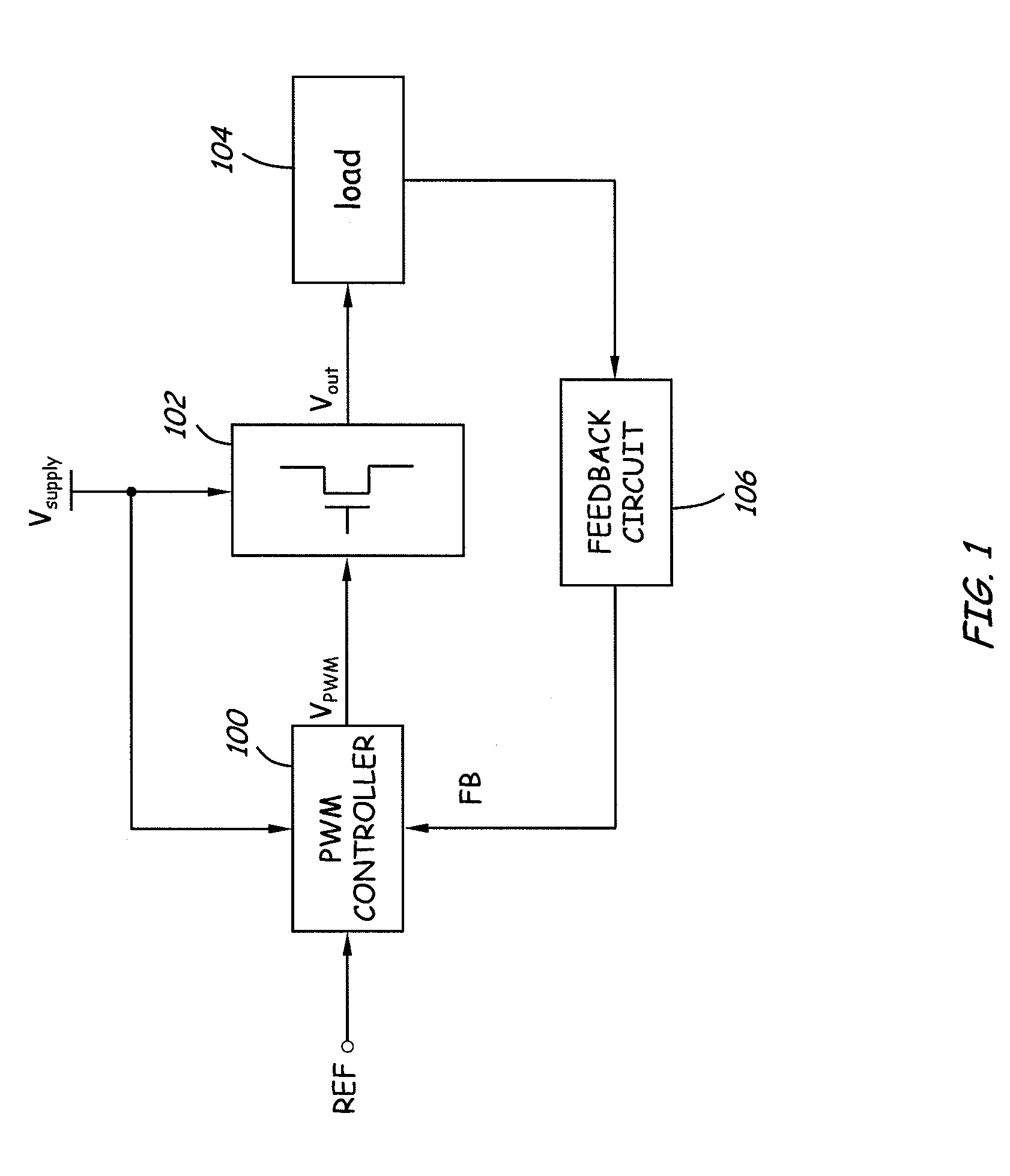Method and apparatus to compensate for supply voltage variations in a PWM-based voltage regulator
a voltage regulator and pulse width technology, applied in the direction of electric variable regulation, process and machine control, instruments, etc., can solve the problem of significant delay in this type of pulse width correction, the ramp voltage cannot step instantaneously to follow and correct for a fast supply voltage transient, and the feedback loop is relatively slow for stable operations
- Summary
- Abstract
- Description
- Claims
- Application Information
AI Technical Summary
Benefits of technology
Problems solved by technology
Method used
Image
Examples
Embodiment Construction
[0025]Although particular embodiments are described herein, other embodiments, including embodiments that do not provide all of the benefits and features set forth herein, will be apparent to those of ordinary skill in the art.
[0026]FIG. 1 is a block diagram of a switching voltage regulator according to one embodiment of the present invention. The switching voltage regulator includes a switching circuit 102 configured to receive a supply voltage (Vsupply) and to provide a regulated output voltage (Vout) to a load 104. A feedback circuit 106 senses an output condition to generate a feedback signal (FB) for a controller 100. In one embodiment, the controller 100 uses PWM techniques to generate one or more PWM driving signals (VPWM) to control one or more semiconductor switches in the switching circuit 102. The level or amplitude of the regulated output voltage is proportional to a pulse width (or duty cycle) of the PWM driving signals. The controller 100 receives a reference signal (R...
PUM
 Login to View More
Login to View More Abstract
Description
Claims
Application Information
 Login to View More
Login to View More - R&D
- Intellectual Property
- Life Sciences
- Materials
- Tech Scout
- Unparalleled Data Quality
- Higher Quality Content
- 60% Fewer Hallucinations
Browse by: Latest US Patents, China's latest patents, Technical Efficacy Thesaurus, Application Domain, Technology Topic, Popular Technical Reports.
© 2025 PatSnap. All rights reserved.Legal|Privacy policy|Modern Slavery Act Transparency Statement|Sitemap|About US| Contact US: help@patsnap.com



